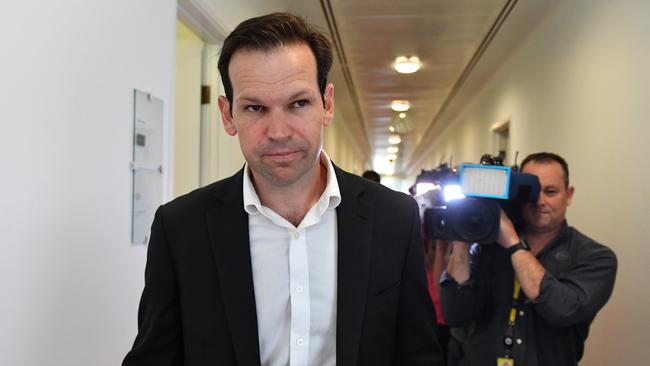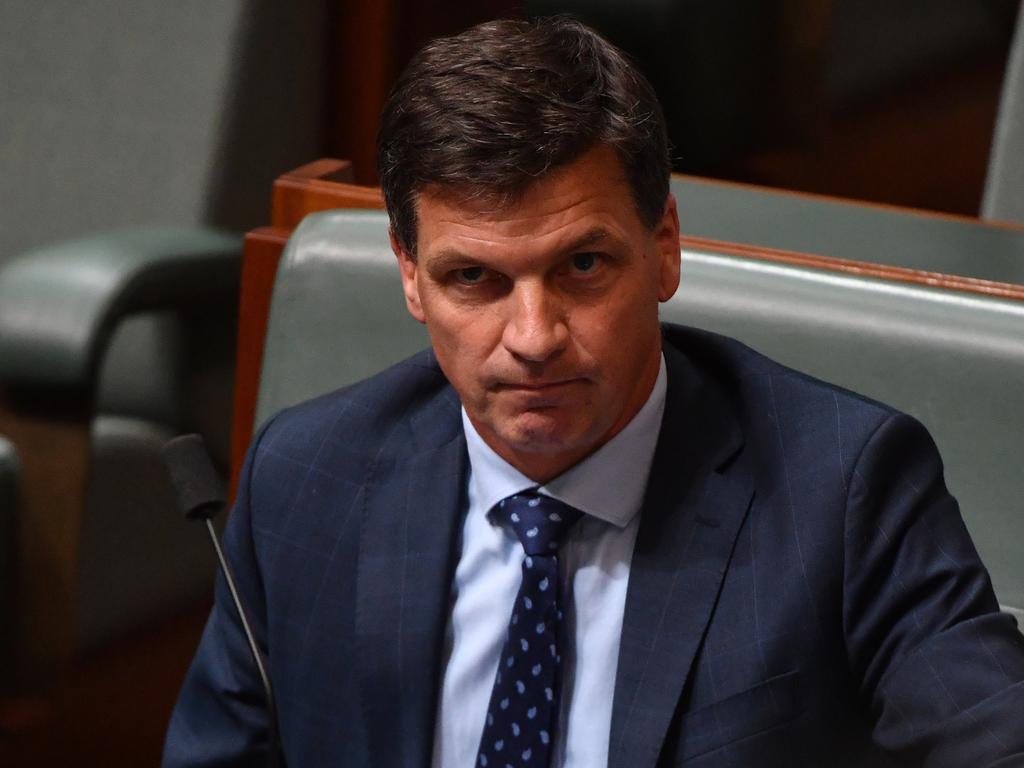Coalition backbenchers demand greater role for coal
Matt Canavan raises concerns with Energy Minister Angus Taylor after new coal-fired power stations were omitted in draft Technology Road Map.

Scott Morrison’s emissions reduction technology plan will increase energy prices and cost taxpayers more than a market-based solution, energy experts have warned, amid backbench complaints that high-efficiency coal plants have been overlooked.
Grattan Institute director Tony Wood said it was problematic the government was “picking winners” in surveying 140 technologies that could lower emissions, rather than leaving it to the market.
Energy Minister Angus Taylor on Thursday unveiled the draft Technology Road Map, outlining new technologies to lower emissions including hydrogen as well as carbon capture and storage, sequestration and soil carbon as priorities.
There was no mention of new coal-fired power stations in the plan, which will form the basis of the government’s long-term climate change policy to be taken to a United Nations summit in Glasgow next year.
With the government opposed to a price on carbon or an emissions trading scheme, Mr Wood said taxpayers would be left with substantial costs to directly fund or subsidise low emissions technology.
“If governments put in money to support technology, then as far as I know that money comes from our taxes,” Mr Wood said.
“If we are committed to 26-28 per cent (emissions reductions under the Paris Agreement), wouldn’t it be better to have a (carbon trading) mechanism, whether it is the national energy guarantee or something like that?
“The best way for governments to do this is to set that objective in policy and let the market work out the lowest cost way of doing it.”
Energy economist Bruce Mountain said the government’s push for gas to be a transitional fuel would lead to an increase in energy prices.
“It is cheaper to burn gas to generate electricity in most countries in the world than to burn coal. But for us it is very much cheaper to burn coal than gas,” Mr Mountain said.
“We would need to massively increase the volume of gas in Australia and have a reservation scheme to keep it for local use. Only if we do that can we expect prices to be substantially below their current levels.”
Opposition energy spokesman Mark Butler also said it was problematic for the government to pick winners.
“It is for the market to decide,” Mr Butler said.
“Renewable energy is now not just competitive, it is the cheapest form of new energy, without the need for any government subsidy. What investors do need, though, is a stable set of investment rules which this government has been unable to deliver since the demise of the national energy guarantee.”
Former resources minister Matt Canavan said he raised concerns with Mr Taylor because there was no reference to new coal-fired power stations in the draft Technology Road Map.
“I have already provided feedback to Minister Taylor that in my view coal-fired technologies must have greater prominence in the final version,” Senator Canavan told The Australian.
“I recognise this is a draft but we must continue to have a competitive use of coal to rebuild our manufacturing industry and given that is the goal of the government we cannot afford to ignore coal.”
Nationals MP Barnaby Joyce and Liberal MP Craig Kelly also called for more coal in the plan.
A leaked report from the National Covid Coordination Commission, obtained by Sky News on Thursday, argues Australia should use cheap gas to turbocharge its manufacturing sector, outlining reforms that could more than half the gas price to $4 per gigajoule.
The report urged the federal government to guarantee gas volumes, remove regulatory barriers for new fields and vastly expand the pipeline network.
Business Council of Australia chief executive Jennifer Westacott said the government’s technology discussion paper would help “chart a course to a lower emissions future”.
“The technology roadmap will drive and prioritise investment in new technologies that will help put Australia on a path to net-zero emissions by 2050,” Ms Westacott said.
Minerals Council of Australia chief executive Tania Constable said it was good the road map embraced carbon capture and storage technology.




To join the conversation, please log in. Don't have an account? Register
Join the conversation, you are commenting as Logout